Dubai’s Comic Con draws 50,000 fans and cult figures like William Shatner and Gillian Anderson. But the real attraction is the futuristic city’s homegrown talent.
DUBAI, United Arab Emirates—
At the Middle East Film & Comic Con, wardrobe secrets were spilling. A Saudi teenager revealed how he used toilet paper rolls to make an oversized shell for his Teenage Mutant Ninja Turtles costume. Two young Omani boys eagerly demonstrated how to use Elmer’s glue to recreate the Dragon Ball character Goku’s perfectly spiked hair. And for the smart hijab wearer, a group of young Emirati women showed how to craft a Maleficent headpiece to perfectly cover the hair. (The secret? A lot of electrical tape.)
Four years after its inception, the MEFCC has morphed into perhaps the most high-profile pop culture event in the region. By the close of the convention on April 11, nearly 50,000 attendees had streamed into the three-day extravaganza at Dubai’s enormous World Trade Centre, smashing last year’s attendance by almost 40 percent. The event drew more than 250 exhibitors, artists, and celebrities from the film, television, and comic worlds.
“Remember when the first [MEFCC] was, like, a tent in somebody’s backyard?” Max Landis, Hollywood screenwriter and host of the convention, joked onstage during the kickoff.
He was exaggerating, but just barely: At the first Con, in 2012, just a few thousand attendees sat in a tired old marine club building on the outskirts of the city like nerds on the periphery of a high school dance. Indeed, culturally, Dubai might still seem like an unlikely place for a raucous weekend party of sci-fi aficionados, but it definitely looks the part. During a speech, William Shatner—Captain Kirk himself—seemed impressed: “I don’t know much about Dubai, but it is like out of someone’s futuristic imagination.”

For many people, this is the vague image of Dubai: a desert landscape as foreign as Tatooine, a desert city of gleaming skyscrapers, Guinness World Records, and ultramodern luxury. Since its rise to global prominence, the emirate has carefully crafted this utopian image. And though the 2008 global financial crisis briefly stunted its ambitious growth, Dubai is again showing its penchant for sci-fi-worthy flights of architectural fancy, recently announcing construction plans for a man-made tropical rain forest, the world’s largest shopping mall (again), and a 2-mile, $500 million canal encircling downtown.
While finance is still the biggest game in town, Dubai is also working to position itself as an international hub of several burgeoning markets including Islamic fashion and halal food production. One of the most promising? The film and animation sector.
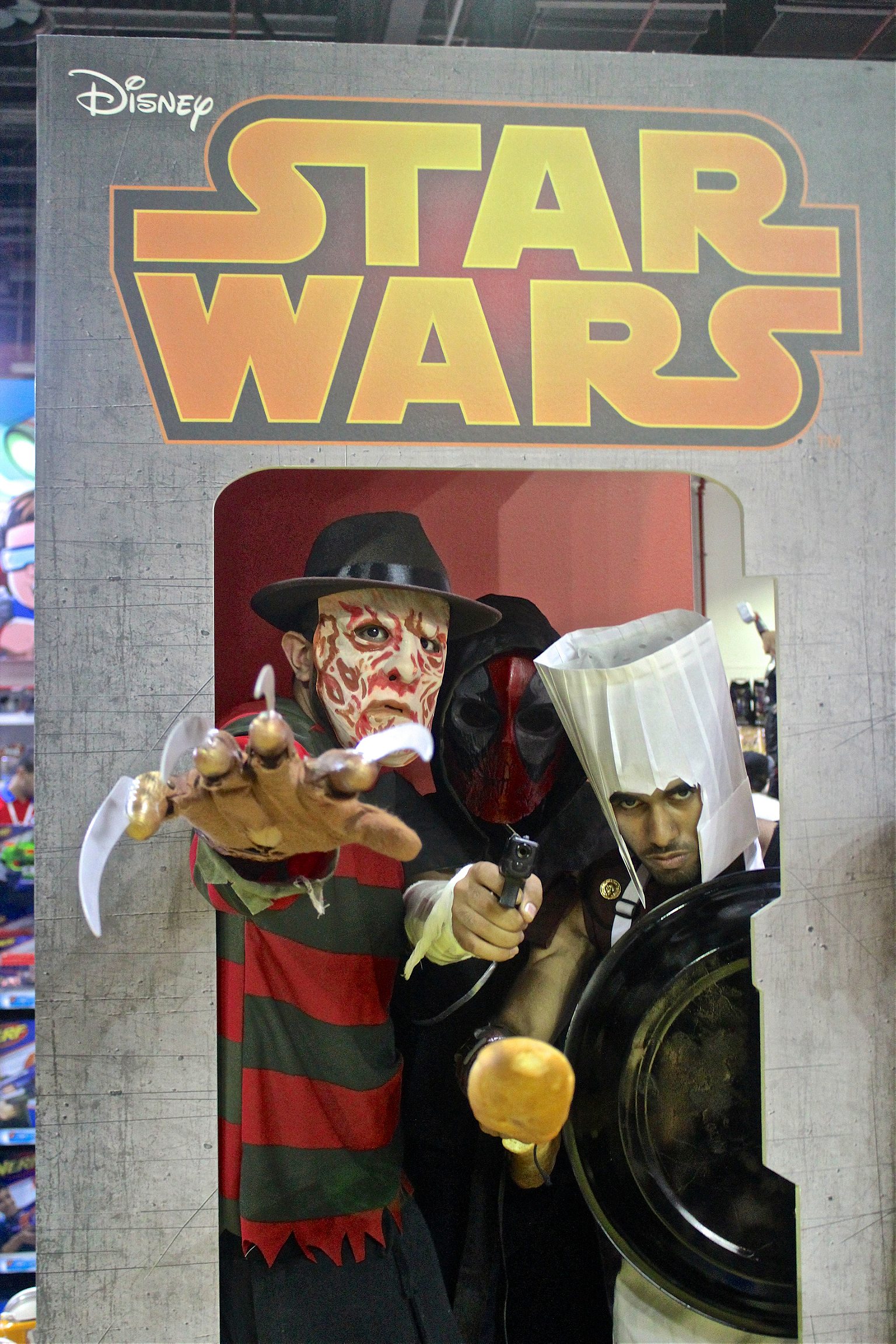
The requisite sci-fi celebrities and cult heroes made a splash at Dubai’s Comic Con, of course: The X-Files’ Gillian Anderson signed autographs; 1980s icon Sam J. Jones reminisced about Flash Gordon; and Miltos Yerolemou, who plays Arya’s “dancing teacher” Syrio Forel on Game of Thrones, even offered sword-fighting lessons on the eve of the HBO show’s premiere. But for all of the foreign celebrities in Dubai—a city often derided for its reliance on imported culture—the MEFCC showed off one of the city’s most exciting emerging markets: homegrown film and comic industry talent.
Forty-eight-year-old Emirati artist and entrepreneur Jalal Luqman sat glued to his brightly colored Comic Con booth on April 10. He was debuting his graphic novel, The Armagondas—one of the country’s first—after two decades of developing the epic fantasy series’ universe, a dystopian world of hellfire and dragons. Early prototype statues of brutish, gargoyle-like strongmen sat on the corner of the booth. As one of the UAE’s pioneering artists, Luqman witnessed the expansion of the comic scene from niche to developing powerhouse. “If we can’t get something said in one [artistic] form here, we try another,” Luqman said.
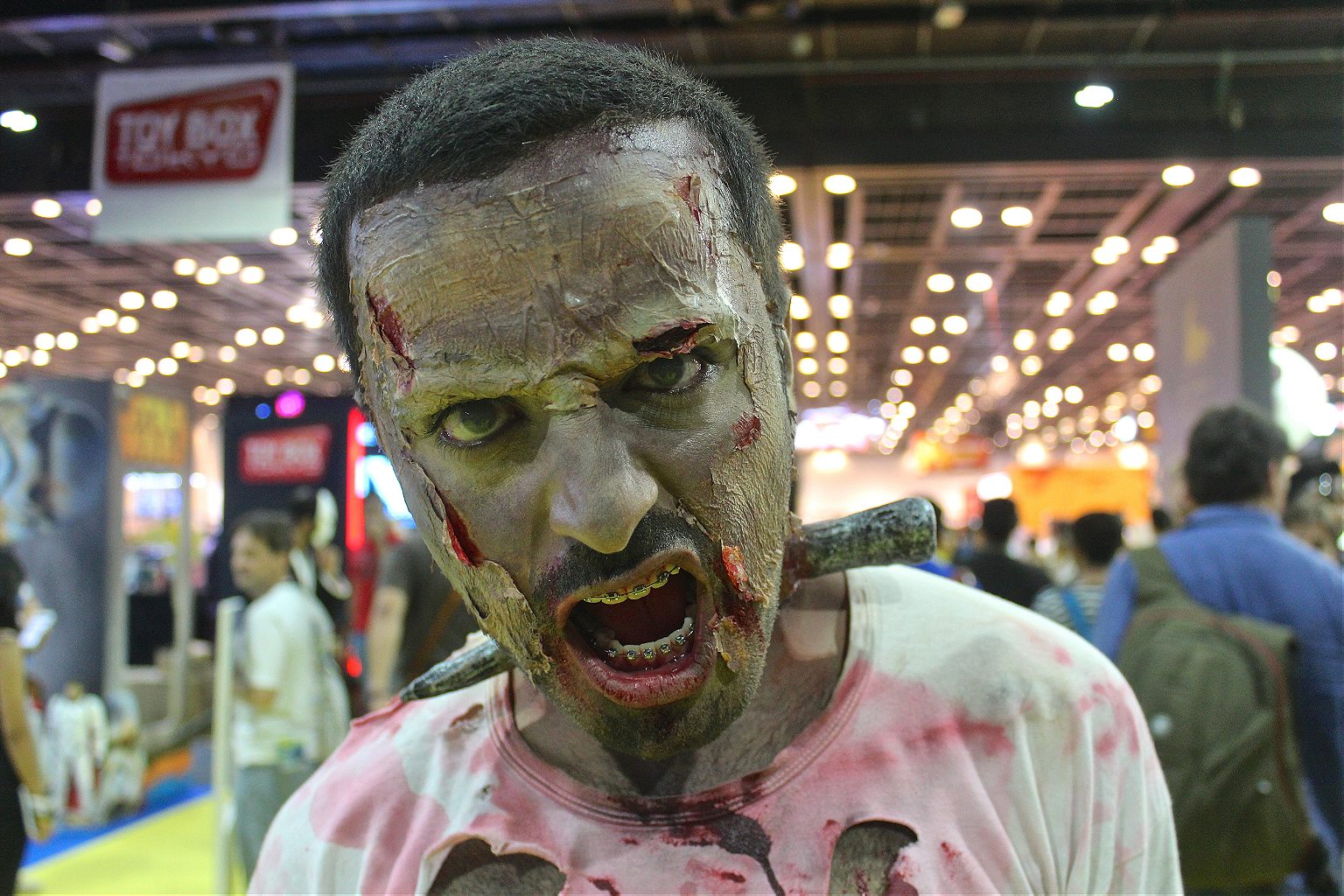
Across the convention center sat one of Luqman’s friends and contemporaries, Dubai-based Indian comic book artist and filmmaker Ashraf Ghori. As eager gamers jostled in front of him, Ghori deftly moved his pencil across a large pad of paper, sketching. “In the ’90s, when I was growing up here, I always wished something like [the MEFCC] would have happened,” Ghori said as two Emirati teenagers dressed as Legend of Zelda characters strutted past. “Sure enough, now it has.”
Ghori got his start as an illustrator with the fledgling English-language newspaper Khaleej Times in the late ’80s, when opportunities in the industry were scant. Today, as the director of the country’s first CGI sci-fi film, the futuristic cyborg thriller Xero Error, he is one of the most influential membersin Gulf social media. And as his regular Web comic FOBcity—a biting, satirical look at immigrant and expatriate life in a foreign country—takes off, Ghori is also embarking on a groundbreaking collaboration with renowned Arab rapper the Narcicyst in a mixed-media project called World War Free Now set for release next month. “It is music, video, and comics together. We are building a community across the arts here,” Ghori said.
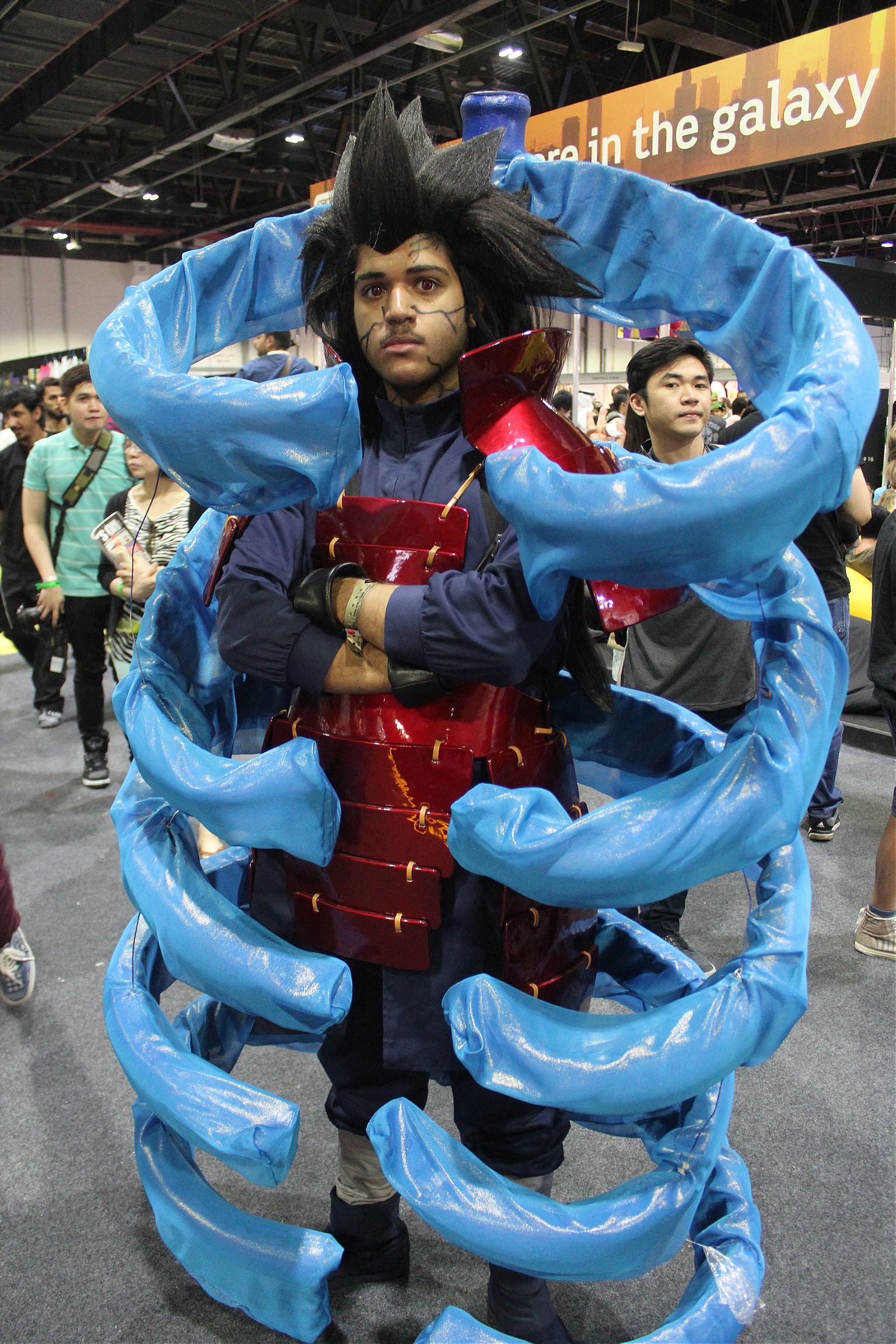
Ali Al Sayed also knows the importance of a fluid artistic community for the UAE. The pioneering local comedian emceed the MEFCC’s main stage, runs one of the region’s only comedy training programs—Dubomedy—and sees comics, film, and the arts as crucially interconnected.
He counts local Comic Con fans as one of his most important demographics. As we spoke, members of his comedy troupe sold T-shirts with slogans such as “Luke, I Am Your Mother,” featuring the image of an elderly Emirati woman wearing a niqab.
“My first gig in Dubai was a 30-minute set in front of 800 dentists,” Al Sayed laughed. “But now the city is changing. There’s a market for comedy, for nerds, for everyone.”
The UAE has long suffered from a dearth of local actors and draconian performance laws, and Al Sayed, who was especially excited for the MEFCC’s film and performance events, like the premiere of local filmmaker Faisal Hashmi’s new short, hopes to help the industry by normalizing comedy, acting, and performance. “We have to support each other to keep growing,” he said.
And while the MEFCC sometimes seems like a boys’ club, women have played a crucial role in the industry’s development—and they are a key Comic Con demographic. In Artists Alley, a labyrinthine maze of artists displaying their work during the convention, almost half the exhibitors were women.
Fakhra Al Mansouri, the founder and CEO of Hybrid Humans, a local independent gaming studio, excitedly explained the programming of Hop Hop Away, the company’s latest game, involving animated runaway circus rabbits. At another booth, Emirati artist Maryam Al Zaab sold her bold illustrations of reinterpreted pop culture icons.
But the female artists weren’t limited to the Emirates—many were drawn to the MEFCC from nearby countries as well, including Kuwait, Lebanon, and Sudan.
BURGEONING TALENT MEANS DOLLAR SIGNS
“I come to Dubai because the market here is the largest in [the region]. We can all gather here to learn and grow as artists,” said Alaa Ahmed Musa, a talented illustrator and character designer from Sudan.
“Our operations were based only in Cairo, but now there is so much [artistic] community in Dubai that half of our team is here also,” said one female artist from Magnoon Magazine, a comic collective magazine illustrated by artists from across the region. “This is a city where this kind of art is more and more respected. It is exciting more people.”
Burgeoning talent also means dollar signs, and even international artists and distributors have taken note of Dubai’s comic scene for its substance instead of just its style. Though Sohaib Awan, creator of the digital comic Jinnrise, is based in the United States and has found success publishing there, he launched his product at the MEFCC in 2012 and is back again, even talking with some Middle Eastern distributors. His series tells the story of a young student facing insurmountable odds when interstellar forces invade Earth and a misunderstood and forgotten race—Jinn, or genies—becomes humanity’s only hope for survival. “We think of Jinnrise as a global brand, but we’ve found a family here in Dubai,” said Awan.
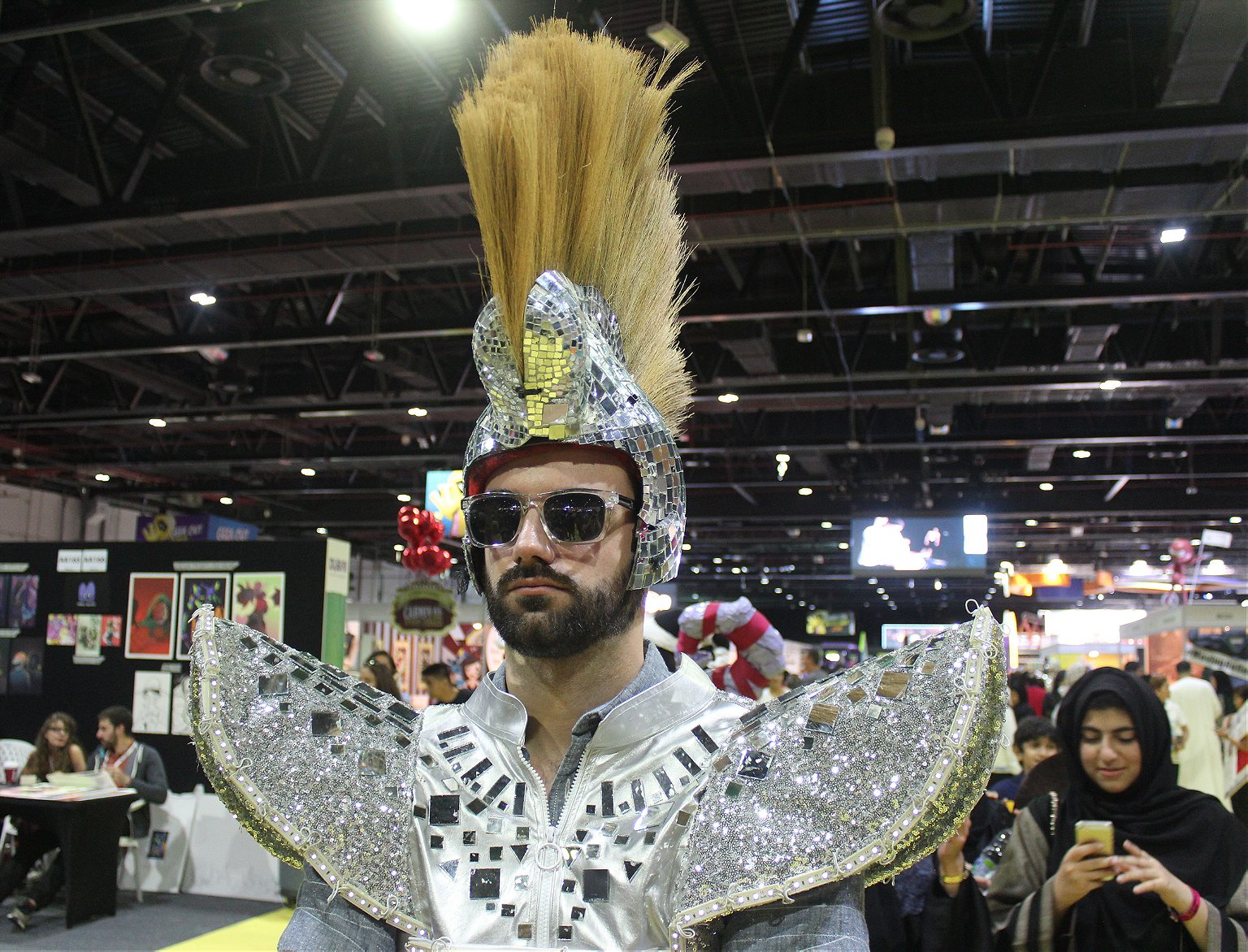
For Awan and the rest of the artists and exhibitors at Comic Con, that family and sense of home often stem from the city’s mix of cultures. One of the most popular exhibitors at this year’s convention was Hudoob, a Dubai-based apparel company that expertly wrestles with questions of home and identity. The company’s sharp T-shirts and snapbacks feature hip Emirati slang and classical local proverbs in a smart mix of calligraphy, popping colors, and contemporary design.
“For us, it was important to create something rooted in local culture but for today’s generation,” said Hudoob co-founder Max Stanton, a fluent Arabic-speaking American who was raised in Yemen and now lives in Dubai. For both him and his co-founder Khalid Mahmood—an Emirati who has watched his country’s population morph into predominately expatriate—capturing these notions of shifting culture is key for their demographic.
Other work attempted to wrestle with the proliferation of American comic pop culture and Japanese manga in the local setting. Japanese drawing styles heavily inspired the work of young Emirati designer and illustrator Shaikha Al Hattawi. “I haven’t even been to Japan yet, but it’s everywhere in my drawings,” she said.
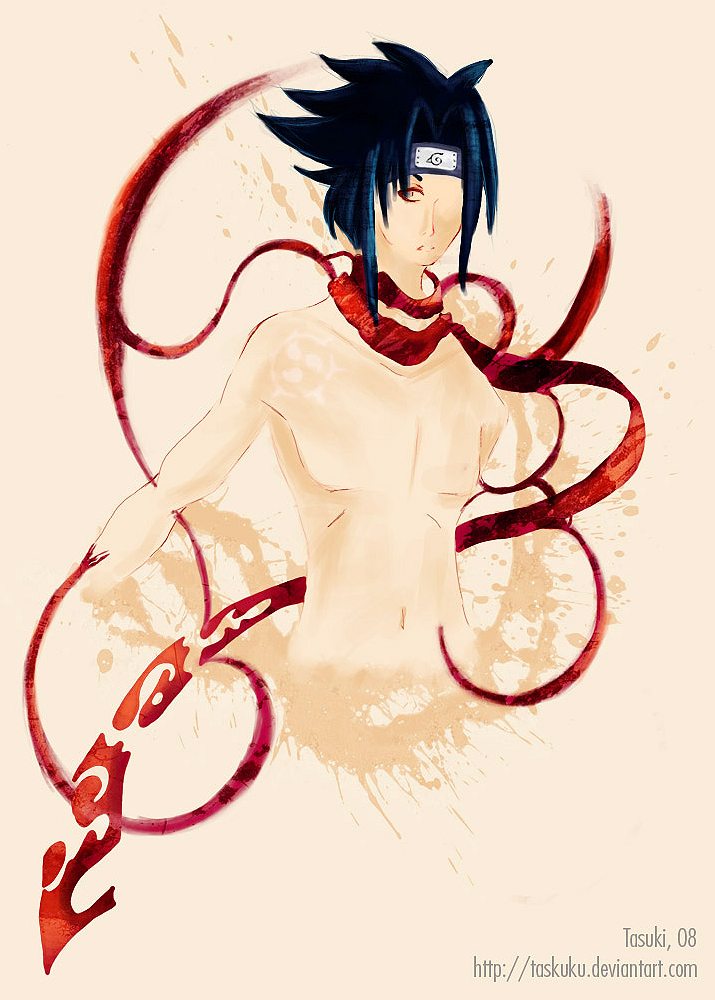
And just like the work on display at Comic Con, many of the attendees were playing with the same questions of race and belonging.
“I was born in Singapore, grew up in Qatar, but my father is Malaysian and my mother is from the Philippines. Now I’m in Dubai,” said one young cosplayer. “Explaining that always takes so long. At Comic Con, I can be anyone,” he continued, his eyes lighting up beneath his Green Lantern mask.
Cosplaying was one of the biggest hits at Comic Con. Teenagers, young adults, and even some adults who couldn’t be called young anymore seemed eager to try on a different persona. Excited chatter emanated from the ladies’ prayer room at the World Trade Centre, generally a subdued place of reflection. In walked women dressed in jeans, slacks, and abayas. Out streamed Natasha Ironses, Erza Scarlets, and Wonder Women.
I COULD HIDE THE ARROWS UNDER MY ABAYA
Still, there was some measure of cultural restraint in place at the MEFCC. After taking a stream of mock execution photos with eager victims, four young Emirati men dressed as characters from Assassin’s Creed politely refused to pretend to slit a young woman’s throat—even after she insisted. Instead, they compromised by taking a “thumbs up” photo together, unhooded and smiling.
Many women proved eager to subvert any cultural expectations. While a group of men dressed as Call of Duty: Black Ops soldiers snuck between booths, two Emirati girls stole their guns, setting off a convention-wide chase.
Later, showing off her Katniss Everdeen costume, a 16-year-old explained it plainly: “Katniss was easiest because I could hide the arrows under my abaya when I left from home this morning.”

Omar Ismail, Emirati founder of the robust 450-member Gulf Roleplaying Community, said the growing regional interest in comics, expanding in every direction—male and female, young and old, local and expatriate—has defied even his expectations as an avid gamer. “When we started at Comic Con four years ago, I just wanted enough people to play Shadowrun [a sci-fi tabletop roleplaying game of cyberpunk and cybernetics]. This year we’re so big, our booth even has a dessert bar,” he laughed, pointing to a chic counter in the corner serving cupcakes. “Can you believe that?”
From nothing to something—it’s the ultimate desert fantasy that Dubai loves to sell. Ahead of the flurry of construction for the massive 2020 World Expoin Dubai—including a nearly $3 billion megaproject of five conjoined theme parks that’s sure to thrill Comic Con lovers—it’s a story that will be told again and again. But, like with any good comic, a reader must dive in past the glossy cover. And at Dubai’s Comic Con, there were plenty of exciting characters working to create the unlikely city’s sci-fi future.
